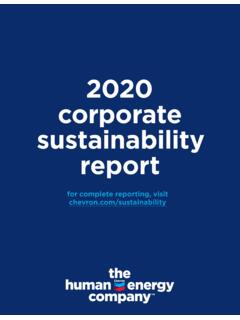Transcription of SOLAR ENERGY- A RENEWABLE SOURCE OF ENERGY
1 SOLAR ENERGY - A RENEWABLE SOURCE OF ENERGY . INTRODUCTION. In today's climate of growing ENERGY needs and increasing environmental concern, alternatives to the use of non- RENEWABLE and polluting fossil fuels have to be investigated. One such alternative is SOLAR ENERGY . SOLAR ENERGY is quite simply the ENERGY produced directly by the sun and collected elsewhere, normally the Earth. The sun creates its ENERGY through a thermonuclear process that converts about 650,000,000 tons of hydrogen to helium every second. The process creates heat and electromagnetic radiation. The heat remains in the sun and is instrumental in maintaining the thermonuclear reaction. The electromagnetic radiation (including visible light, infra-red light, and ultra-violet radiation) streams out into space in all directions.
2 Only a very small fraction of the total radiation produced reaches the Earth. The radiation that does reach the Earth is the indirect SOURCE of nearly every type of ENERGY used today. The exceptions are geothermal ENERGY , and nuclear fission and fusion. Even fossil fuels owe their origins to the sun; they were once living plants and animals whose life was dependent upon the sun. Due to the nature of SOLAR ENERGY , two components are required to have a functional SOLAR collects the radiation that falls on it and converts a fraction of it to other forms of ENERGY (either electricity and heat or heat alone). The storage unit is required because of the non-constant nature of SOLAR ENERGY ; at certain times only a very small amount of radiation will be received.
3 At night or during heavy cloud cover, for example, the amount of ENERGY produced ENERGY generator. These two components are a collector and a storage unit. The collector simply by the collector will be quite small. The storage unit can hold the excess ENERGY produced during the periods of maximum productivity, and release it when the productivity drops. In practice, a backup power supply is usually added, too, for the situations when the amount of ENERGY required is greater than both what is being produced and what is stored in the container. Window of Opportunity: SOLAR ENERGY Industry in India SOLAR ENERGY is one of the purest and clean forms of ENERGY we receive on earth, without any environmental degradation.
4 Thanks to the never-ending SOLAR radiations we receive, it is responsible for all the life processes taking place on earth. If we tap into this ENERGY systematically, this can be the largest SOURCE of ENERGY , and even a tenth of ENERGY from SOLAR rays on earth can solve the entire ENERGY crisis In India, however, the potential of ENERGY from SOLAR rays is about 750GW. If this ENERGY is utilized, we won't need any other SOURCE of ENERGY in our country. There are many ways converting SOLAR ENERGY to electricity, but most widely used ones are by using photo-voltaic cells (also called SOLAR cells) and concentrated SOLAR power, where SOLAR rays are focused and the concentrated power generates heat to run the SOLAR plant.
5 SOLAR ENERGY has gained a lot of significance in recent decade, due to shortage of non- RENEWABLE sources of ENERGY . As on 30 June 2015, the installed grid connected SOLAR power capacity is 4, MW, and India expects to install an additional 10,000 MW by 2017 and a total of 100,000 MW by 2022. India being the first country in the world to setup the ministry of non-conventional ENERGY resources, Gujarat has been a leader in SOLAR power generation and contributes 2/3rd of the 900 MW of photovoltaic in the country There have been a few initiatives from the government, such as the Indian SOLAR Loan Programme, which has focused on financing SOLAR home power systems, to increase the use of SOLAR ENERGY for domestic use.
6 It may also include lighting, irrigation or water heaters. Notably, Bangalore city has the largest deployment of SOLAR water heaters in India. SOLAR industry has Investment 2015 also highlights a record $119 billion in new investment. Gujarat and Rajasthan alone account to more than 88% of total SOLAR ENERGY produced in India. As an entrepreneur, the potential for innovation is endless in this sector, as the whole world is moving in a direction to minimize the use of RENEWABLE ENERGY and opting for SOLAR devices. Right from automobiles to domestic appliances and handheld devices, SOLAR is going to dominate the market in our near future. Moreover, as the efficiency of SOLAR cells is less than 10%, there is huge scope for innovators to develop ENERGY efficient SOLAR devices and make it cost-effective to address the demands of the large population in our country.
7 Advantages of SOLAR ENERGY 1. You Can Make Money One of the best advantages of SOLAR ENERGY , and the one that is primarily responsible for the rapid growth of SOLAR installations in Europe over the past several years is that you can make money from the sun. As a result of feed In Tariff policies in place in much of Europe, you can build sell the electricity, and that income can last for 20 years or more. For each dollar you can reduce your electrical bill, your house can increase in value by up to $20. Even if you don't build the SOLAR yourself in some markets SOLAR companies might be willing to lease your roof or land to install their SOLAR installation. In some cases a joint venture arrangement is also a possibility.
8 2. You Can Save Money If you use the electricity yourself, instead of buying it from the grid, you can save money, which is just as good as making money. This advantage alone is propelling the rapid adoption of SOLAR ENERGY in the USA and many other markets around the world. 3. SOLAR ENERGY Is Abundant The sun will be around a lot longer than oil, coal or gas will be. Some of the materials used to make SOLAR cells to convert the SOLAR ENERGY into electricity, such as the more exotic composite materials may run out over time, but the basic elements used to make SOLAR cells ( , silicon and aluminum) are all abundant and recyclable. 4. As Long As there is Light It Works The amount of sunshine can vary depending on where you are or what the weather is like, but as long as there is light (even a small amount) PV cells can still produce electricity.
9 5. Sunshine Is Free SOLAR ENERGY is free. Sure, there is an initial capital cost to install a system that will convert the electromagnetic ENERGY and photons sent out by the sun into electricity, but once you have made the investment and the sun keeps shining you will be producing electricity. No one will be sending you a bill for sunshine. 6. Environmentally Friendly SOLAR ENERGY powers the environment and life on the planet so there's no ENERGY SOURCE more earth-friendly. Compared to the burning of fossil fuels, which release greenhouse gases, carcinogens and carbon dioxide, SOLAR cells do not release anything harmful into the air as they convert the sun's ENERGY into electricity. If you want clean air one of the important advantages of SOLAR ENERGY is that it will help get us there.
10 7. SOLAR ENERGY Is Cost Effective While a SOLAR photovoltaic panel is still relatively expensive, it will pay for itself over time from the sale of electricity or from saving you money by reducing the amount of electricity you'll have to buy. The time it takes you to recover your net investment (investment less incentives) is known as the payback period. Generally, the payback period for SOLAR installations is getting shorter and shorter. Note: SOLAR hot water panels have been greatly improved in recent years and, with lower cost, payback times for domestic systems can not be as short as five years. In some geographical areas producing electricity from the sun already costs less per kilowatt hour of electricity produced than producing it from fossil fuels.








